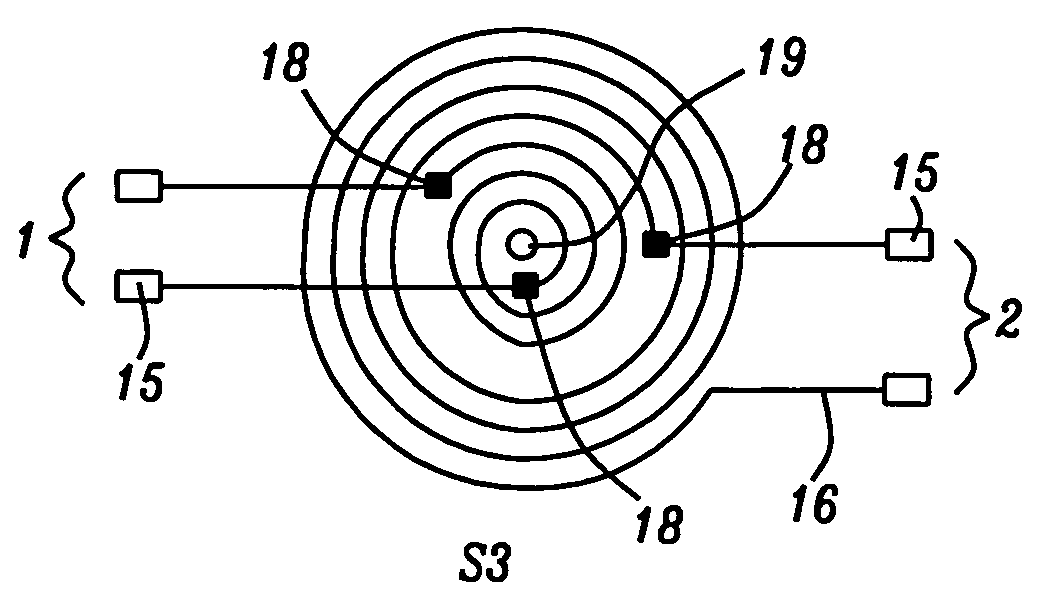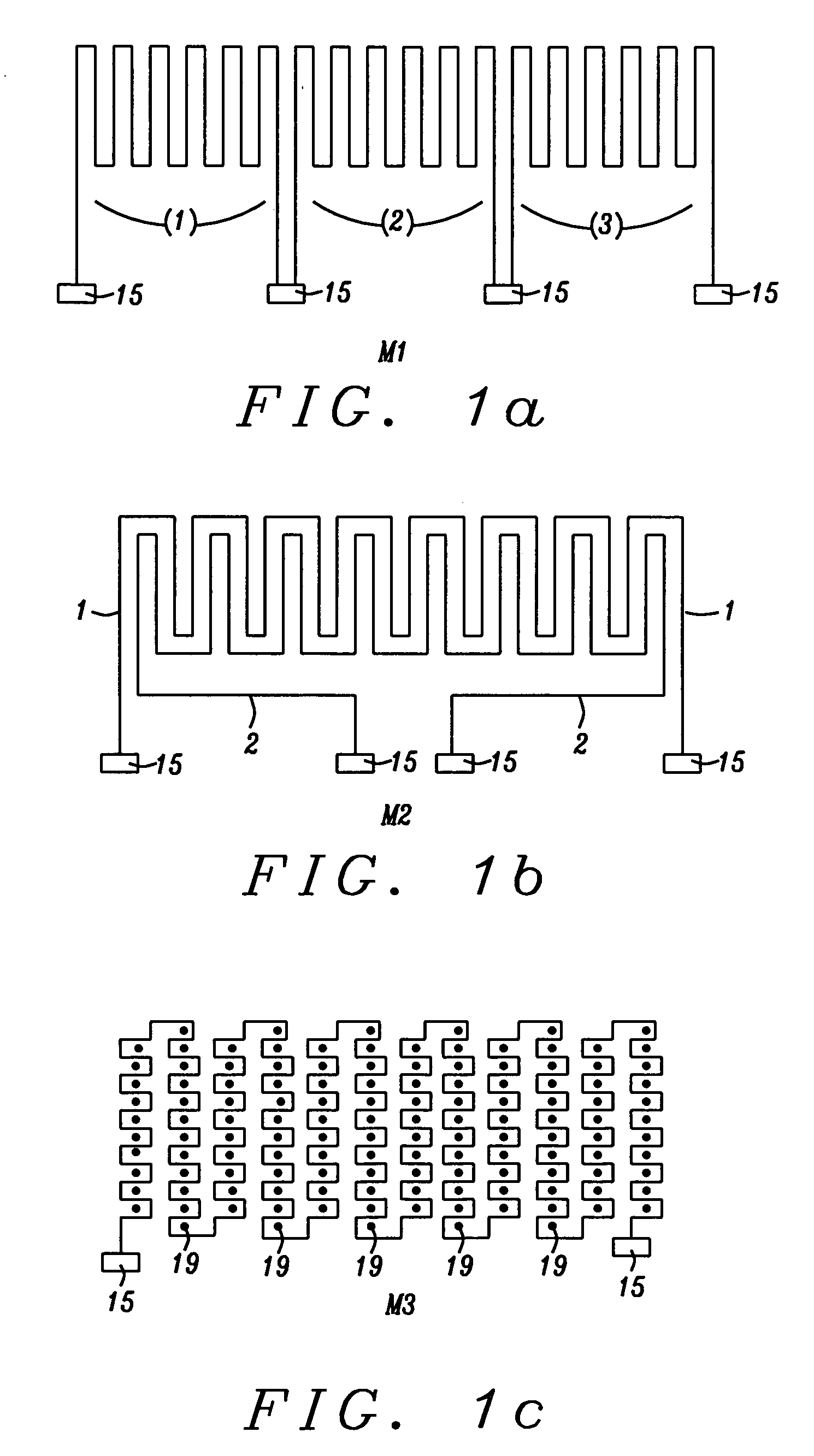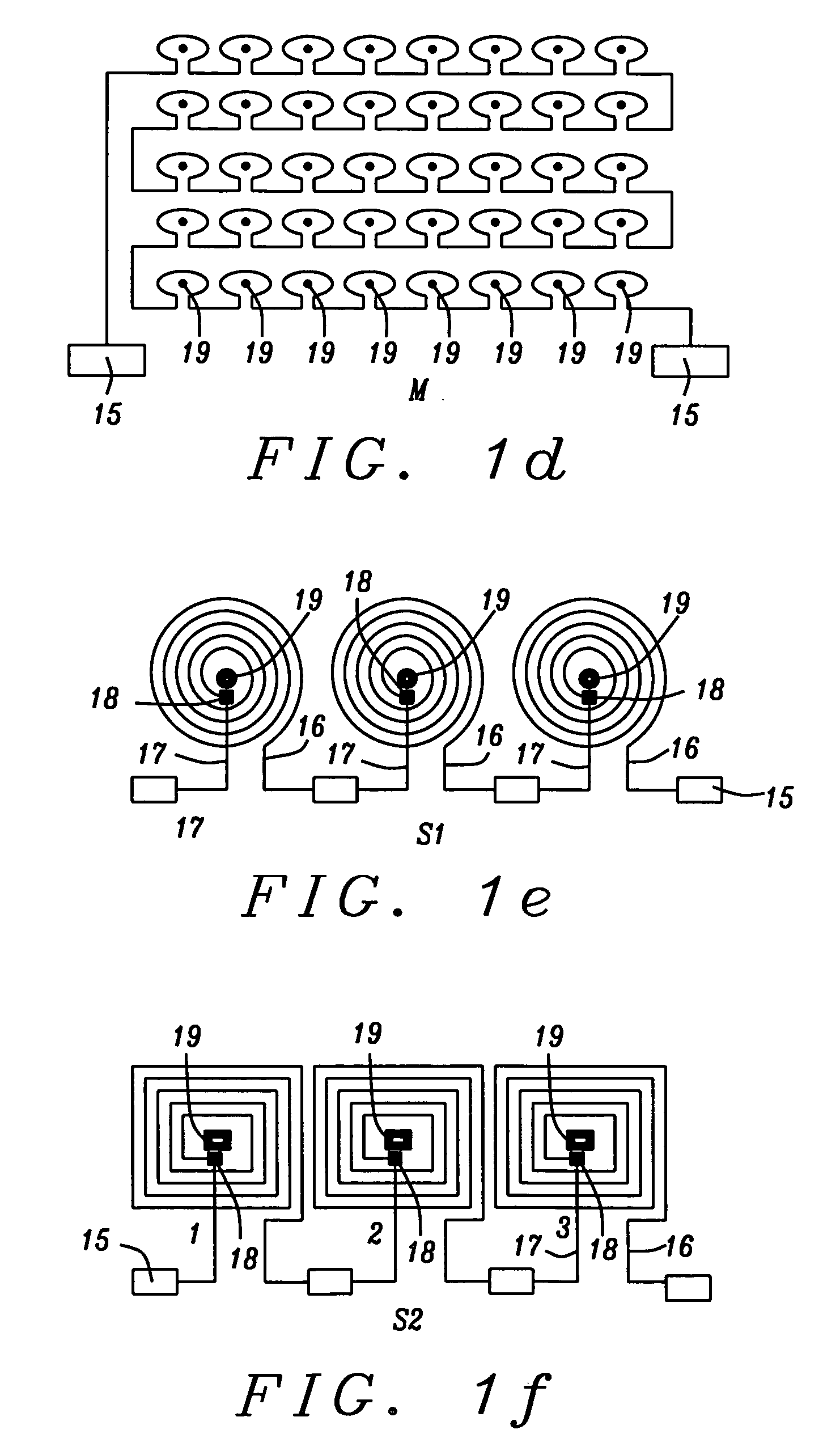Microfabricated system for magnetic field generation and focusing
a technology of magnetic field generation and focusing, applied in the direction of magnetic materials, transformers/inductance coils/windings/connections, optical light guides, etc., can solve the problems of poor selectivity, large force generation of magnetic devices, and general avoidance of magnetically actuated transducers
- Summary
- Abstract
- Description
- Claims
- Application Information
AI Technical Summary
Benefits of technology
Problems solved by technology
Method used
Image
Examples
Embodiment Construction
[0062] The present invention, in each of its embodiments, provides a method of fabricating micro-coils and arrays of micro-coils in and on silicon substrates and embedded within dielectric polymer layers formed on the substrates (and the coils and arrays so fabricated), with and without flux-concentrating magnetic pillars and back-plates. These micro-coils and their arrays produce magnetic fields of large magnitude on the order of 0.1 T and large gradients on the order of 103 T / m and are, therefore, suited for a wide range of applications that require the exertion of strong magnetic forces at small distances. In this sense, the micro-coils are micro-electromagnets. In addition, the micro-coils are micro-inductors and micro-receivers and micro-transmitters of electromagnetic energy. The descriptions given below will first describe the geometric designs of the embodiments, with reference to FIGS. 1a-j and FIG. 2. A second section will then describe the method of fabrication of the emb...
PUM
| Property | Measurement | Unit |
|---|---|---|
| depth | aaaaa | aaaaa |
| depth | aaaaa | aaaaa |
| thickness | aaaaa | aaaaa |
Abstract
Description
Claims
Application Information
 Login to View More
Login to View More - R&D
- Intellectual Property
- Life Sciences
- Materials
- Tech Scout
- Unparalleled Data Quality
- Higher Quality Content
- 60% Fewer Hallucinations
Browse by: Latest US Patents, China's latest patents, Technical Efficacy Thesaurus, Application Domain, Technology Topic, Popular Technical Reports.
© 2025 PatSnap. All rights reserved.Legal|Privacy policy|Modern Slavery Act Transparency Statement|Sitemap|About US| Contact US: help@patsnap.com



